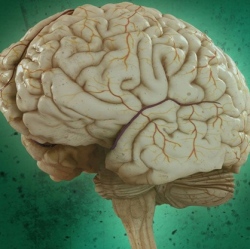
Severe epilepsy is sometimes treated surgically by cutting through the skull and performing a lobectomy in the area causing seizures, which comes with a bit of risk. However, a team of engineers led by Eric Barth of Vanderbilt University have developed a new technique in which a robot performs the surgery by entering through the cheek.
This could minimize how invasive the procedure is and reduce recovery time. Some epilepsy surgeries target the hippocampus near the base of the skull. By going through the cheek to get to the brain, surgeons could essentially take a shortcut in getting to the affected area. Leaving the skull intact would reduce healing time and potential complications. While getting to the hippocampus from the top of the skull might be invasive, it can be done going straight down.
Going through the cheek would require the needle to steer around obstacles. The needle itself is composed of 1.4 millimeter tubes that get slowly pushed out pneumatically. Some sections are curved, allowing the needle to be steered directly to the hippocampus and avoid damaging unaffected structures; a major advance. After each addition of a segment, the area is scanned via MRI to ensure it is on the right path.
“I’ve done a lot of work in my career on the control of pneumatic systems,” Barth said in a press release. “We knew we had this ability to have a robot in the MRI scanner, doing something in a way that other robots could not. Then we thought, ‘What can we do that would have the highest impact?’”
Because the needles are non-magnetic, they do not interfere with the MRI. Other parts of the device are made out of 3D-printed plastic, which is also able to be used. Accurately tracking the needle’s progress millimeter by millimeter through MRI allows surgeons to make much smaller holes, rather than having to go down through the brain and visually guide the tools.
According to Joseph Neimat, a neurosurgeon on Barth’s team, accessing the brain through the cheek is not an entirely novel idea. Before a lobectomy can be performed, doctors need to identify the origin of an epileptic’s seizures. Electrodes that monitor brain activity are placed near the back end of the brain, and many doctors will also go through the cheek in order to place those probes. The ability to perform a surgery in this manner dramatically changes the game.
